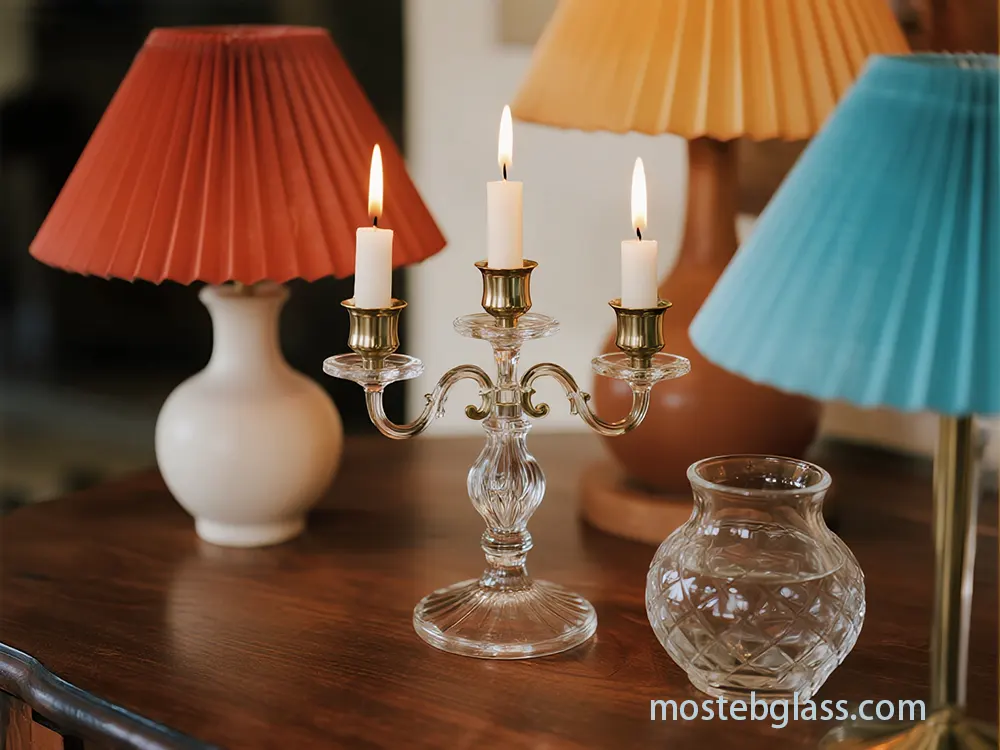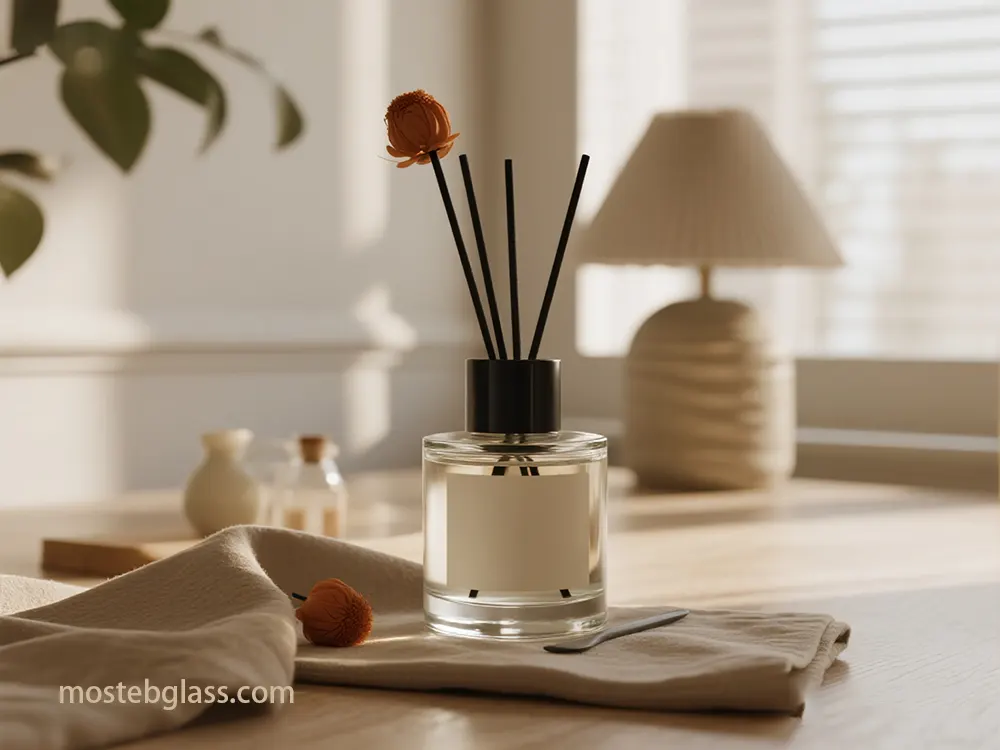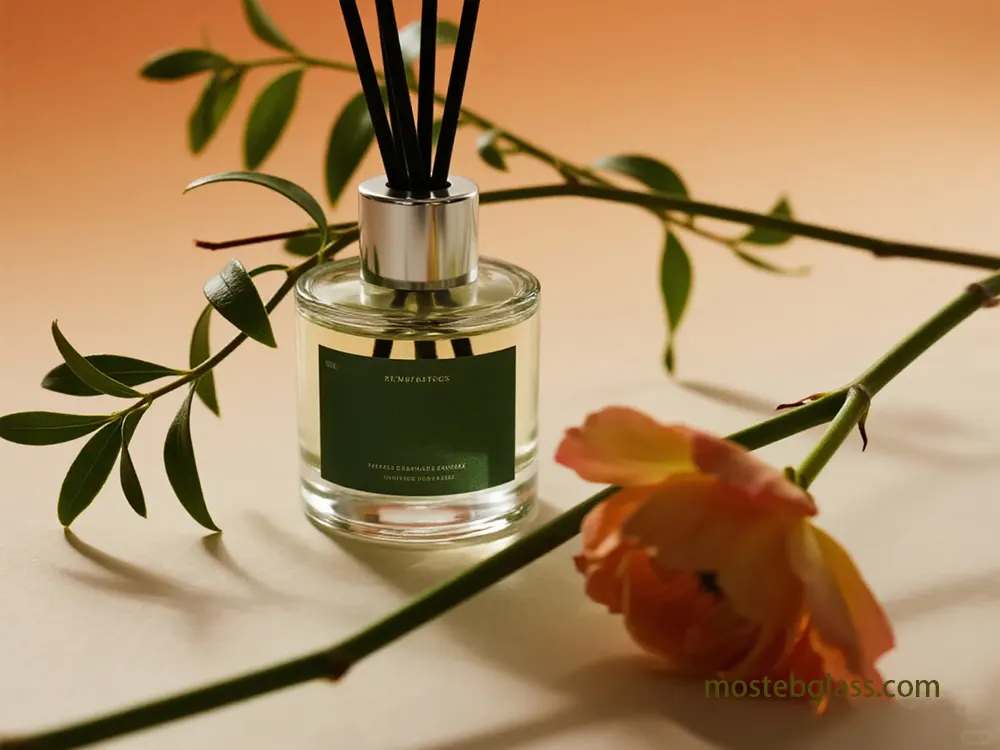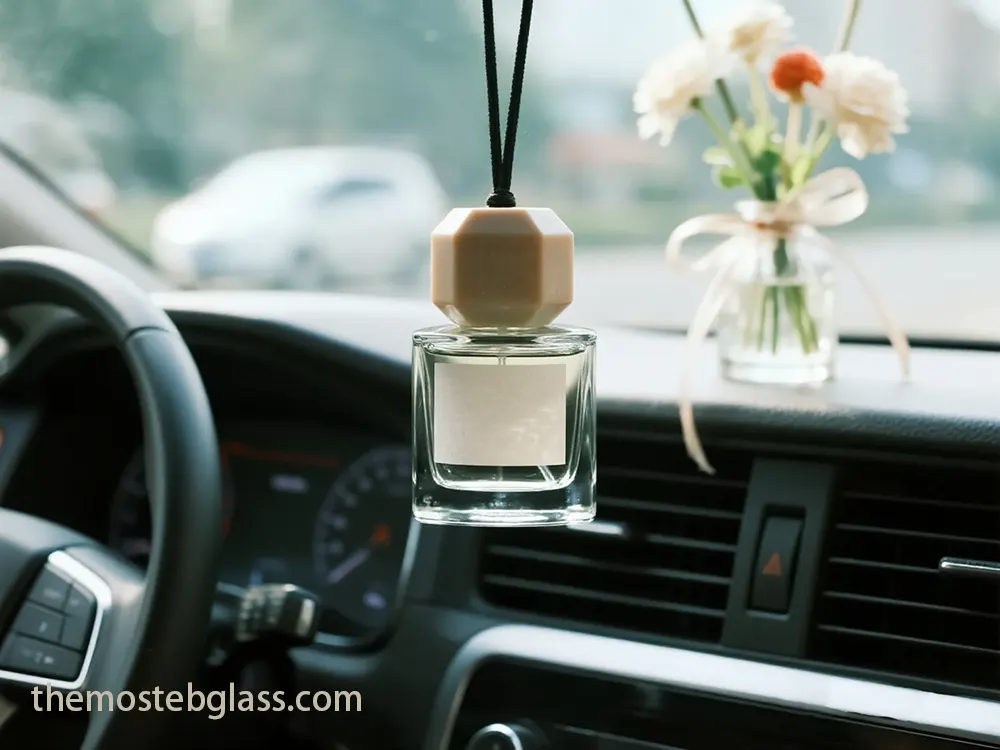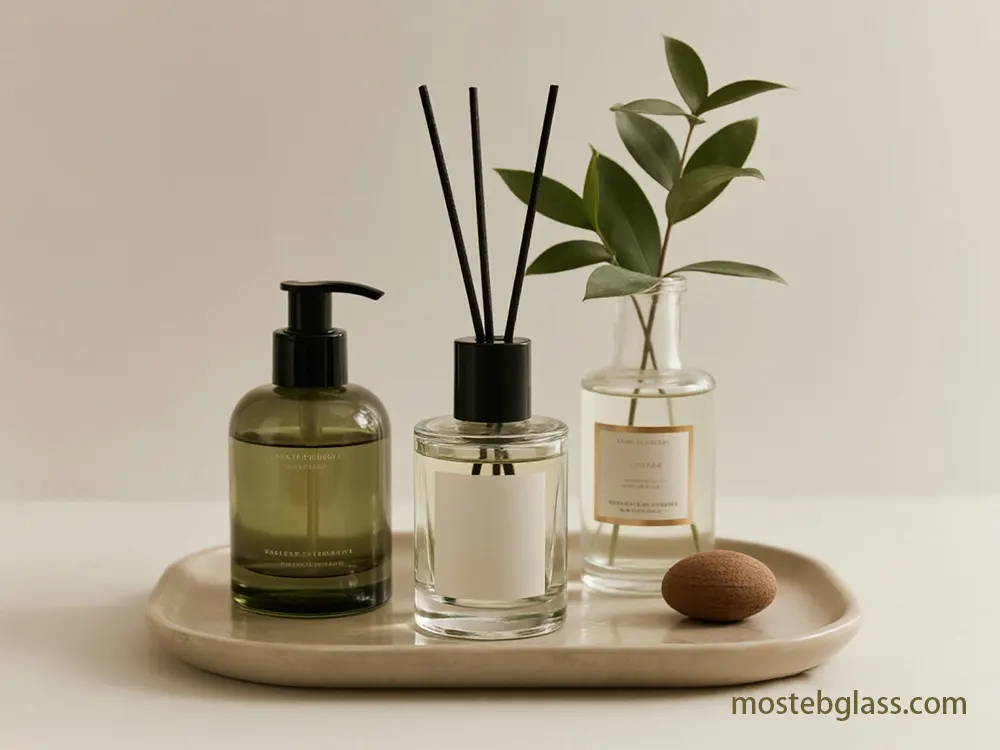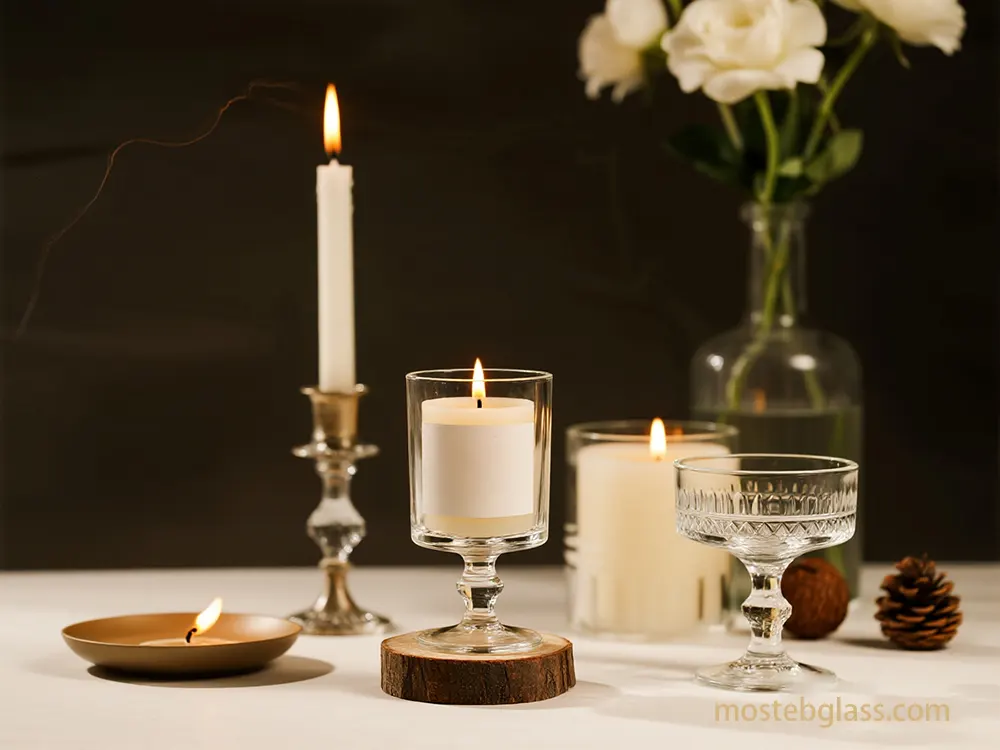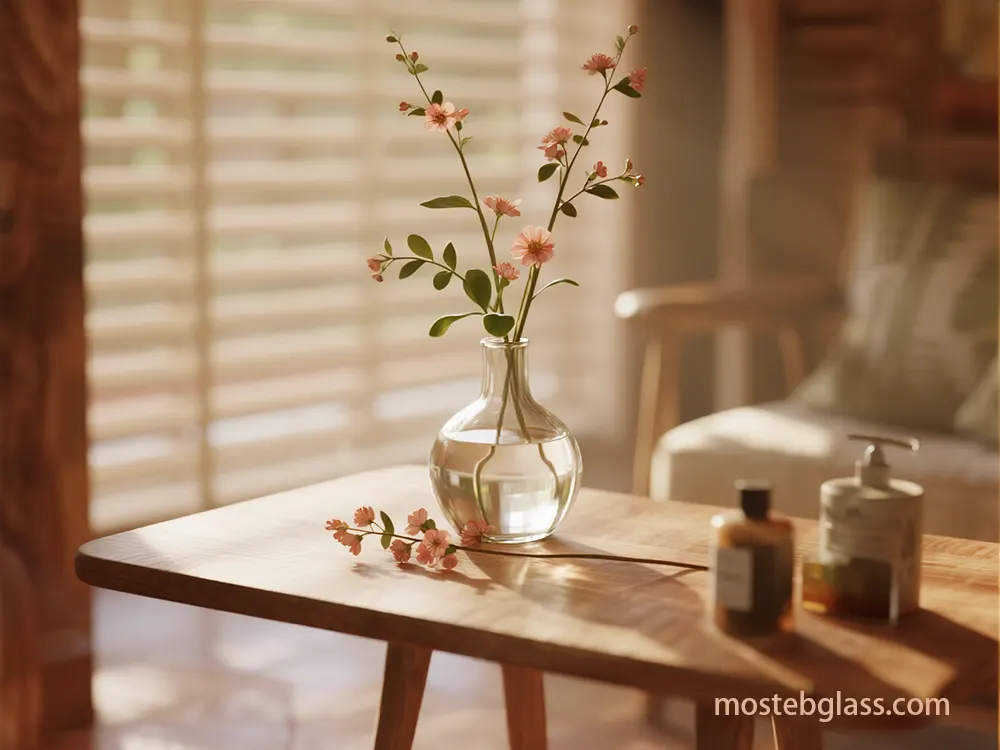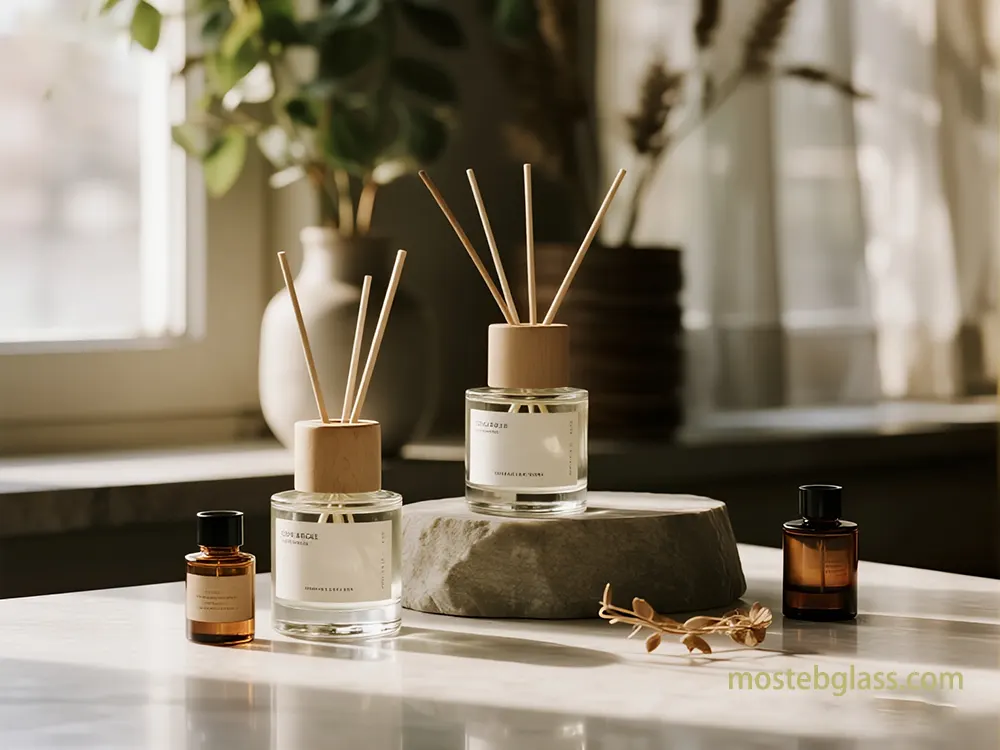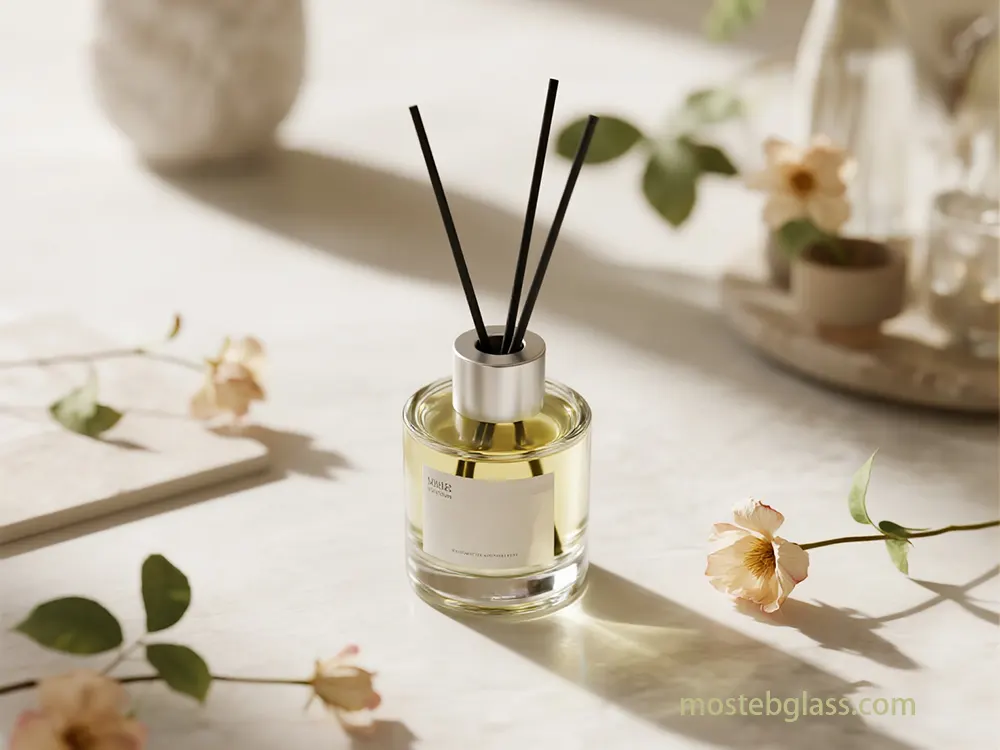1. Executive Summary
This report analyzes the relationship between car perfume diffuser bottle design, brand identity and customer loyalty. The Global Car Air Freshener Market, which is priced at USD 2.7 billion (2024) and is estimated to reach USD 4.2 billion by 2034, is increasing due to consumer’s demand for in-car experiences, premium products, and sustainable solutions, and includes a strategic value, a strategic value, genial price, gustning premium, and functional system to include materials, form, color, and functional mechanisms. Leading brands differentiate through minimum aesthetics, environmentally friendly materials and smart techniques. Future innovation will show smart content, IOT integration and AI-driven privatization for deep consumer engagement. The recommendations focus on aligning the design with the core brand characteristics for the core, memorable and loyalty-driving experiences.
2. Introduction and research scope
The car perfumes are changing the market. Consumers seek products that are functional, enhance aesthetics, and reflect personal values. This report states how the defuser design strategically manufactures brand identity and customer loyalty.
The focus is on the premium and eco-conscious car accessory market, which targets intelligent owners who prefer quality, stability, innovation and refined design. Globally, North America (32.2%) and Europe (36.2%) dominate the car Air Freshener market in 2024. Kiki brand recognition characteristics include luxury, stability, innovation and sportyness. The competitive landscape includes installed and niche brands shaping consumer expectations through design and branding. In 2024, the global market was USD 2.7 billion, it was estimated to reach US $ 4.2 billion up to 2034 (4.7% CAGR). Other estimates vary slightly (eg, growing USD 2.34–2.84 billion in 2024, growing up to USD 3.21–4.05 billion by 2032). The market’s growth-car experiences and vehicle ownership are inspired by the demand for improvement.
3. Working for design effect analysis
A multidimensional functioning is required to measure the brand identification and design effect on customer loyalty, requiring analyzing specific design elements and determining their effects.
Design elements for analysis:
- Ingredients: Primary construction (eg, metal, wood, recycled plastic, glass, ceramic) and accent materials (eg, leather, carbon fibers). Finish (matte, shiny, brush).
- Form Factor: Integration with the overall size and dimensions (eg, minimum cylinder, sculpture form, angular design) and car interior.
- Color palette: Specific color and their psychological associations are used.
- Functional mechanisms: Method of attachment (eg, clip-on, vent-mounted, hanging, magnetic, integrated systems) and odor proliferation (eg, cold defusion, ultrasonic, vaporial, passive).
Metrix and approach to measuring effects:
The effect will be measured against major results:
- Brand Identification Dharna:
- Brand Association: Survey and interview assesses how design elements develop characteristics (eg, brush aluminum to luxury, stability from environmentally friendly designs).
- Brand spirit: Online reviews, social media, and focus groups gauge emotional reactions and design assumptions.
- Brand Strength Index: A overall index determines the overall brand effect, including design, functionality and messaging.
- Customer loyalty:
- Repeat shopping: Tracking repeat procurement and membership uptake (eg, promotes loyalty through reflection subscription facility/savings).
- Brand advocacy: Net Promoter Score (NPS) measures advocacy based on product experience.
- Desire to pay a premium: Combination analysis/Surveys assess how the design affects the affected price and the desire to pay.
- Membership Model Uptake: Analysis of membership conversion/retention rates, linking them from designing elements that reduce friction and increase value.
- Data collection methods:
- Survey and questionnaire: quantitative data on customer preferences, perceptions and desire to pay.
- Focus group and depth interviews: qualitative insight into emotional reactions, beauty preferences and user experience.
- A/B testing: to compare design variations for digital mock-ups or physical prototypes.
- Market Research and Competitive Analysis: To identify benchmarking and gaps against major brands.
- Eye-tracking studies (speculative): measure visual attention and engagement objectively.
These functioning will provide a strong understanding of how the defuser design options strategically shape the brand identity and promote permanent customers.
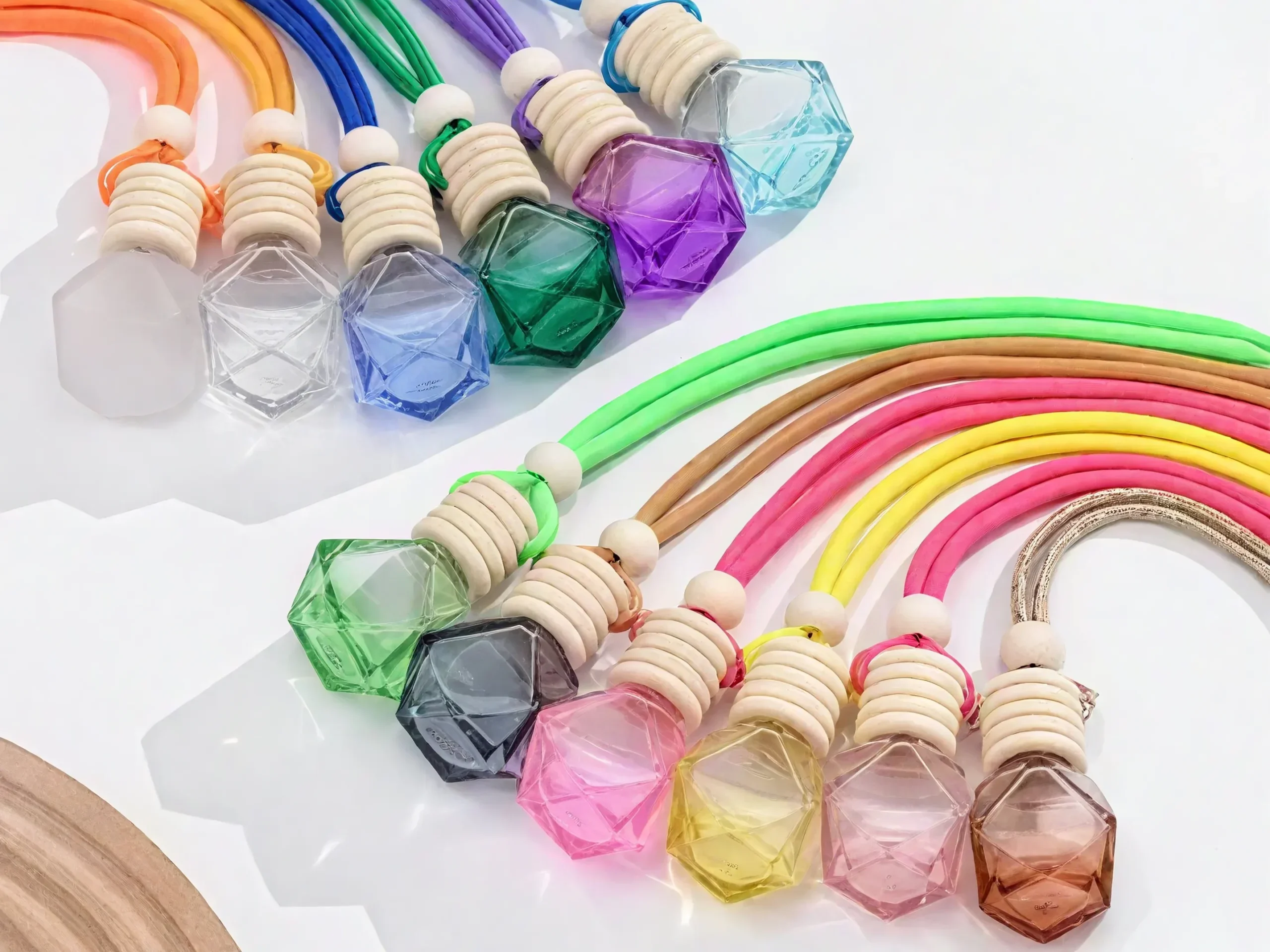
4. Their impact on design elements and brand identity
Defuser design powerful communicates brand identity; Each element, from the material to the mechanism, shapes the consumer perception of the main characteristics.
4.1. Material selection and brand perception
The choice of material is important to express luxury, stability, innovation and sportyness.
- Luxury: high-end materials such as brush aluminum, polish chrome, real leather, or ceramic con quality and exclusion.
- Stability: Conscious consumers of the environment pay more for permanent products. Brands use CO2-low steel in rapid recycled plastic, ocean waste, agricultural sub-products and car interiors. For defuser, this means that constant sour wood (eg, drifted alder wood), rebuilt metal, or bio-plastics. Mercedes-Benz Net-carbon targets neutral cars by 2039, using recycled waste and durable leather by 2025. This affects the perception, as preference the environmental impact on quality/price.
- Technical innovation: Using smart materials or advanced composites indicates innovation. Automotive trends (eg, light frames of Jaguar, algae-based paints of mini) connect future content to innovation and performance.
- Sports: Carbon fibers increase accent or light alloy speed and performance. The surface texture also matters: smooth, stability/description for sophistication.
4.2. Form factor and brand identity
Defuser sizes and form are powerful semi -conceit affecting psychological reactions and the notion of the brand.
- Luxury: Luxury defuses often suggest artistry to complex, sculpture shapes.
- Minimalism: Minimal design has clean lines, simple geometric shapes (cylinders, cubes), and no ornamentation. With neutral colors/matte finish. Flowing wood, stone and metal options follow this rustic-until now-the-class approach.
- Sports: Sporty defuser includes aerodynamic shapes, angular design, and to incite speed to include dynamic lines. The shape of curvature, rest.
- Integration with car interior: Successful design integrates basically with the beauty of the car, complementing the interior. The car interiors (eg, modular seating, holographic dashboard) require adaptable, non-authentic defuser designs.
4.3. Color palette and brand identity
Color psychology shapes brand experiences and consumer behavior; Strategic options can increase brand recognition up to 80%.
- White: Expresses cleanliness, clarity, purity, simplicity, sophistication and freshness.
- Lal: Courage, confidence, warmth, innovation, friendship, energy and sporty are associated with.
- Purple: Knowledge, luxury, wealth, spirituality, imagination and sophistication are associated with.
- Orange: Imagination, passion, change, creativity, innovation and balance suggests.
- Neutral tones: For luxury and minimal brands, the neutral palette (eg, black, white, gray, cream white, sand gray, dark black, obesidians blue, olive green, matte black) expresses sophistication and timely.
- Vibrant accent: For sporty brands, vibrant colors (eg, red, blue, silver) can be used as accents to increase mobility.
4.4. Functional mechanisms and brand identity
The functional mechanism of a defuser determines the purpose and subtle the brand identity, especially innovation and user-centeredness.
- Vent-mounted clip: Popular for ease of use through car fans and efficient odor distribution dominates the vent-mounted clip market (USD 1.75 billion in 2024) due to practicality and access.
- Magnetic enclosure: Magnetic enclosures provide a smooth, prudent option, which is easily placed on a dashboard or vent, indicating modern design and user convenience.
- Hanging Defuser: Popular in emerging markets for strength, hanging defuses offer apathy and adaptation. Concerns related concerns include visual or projected risk.
- Integrated System: Luxury vehicles integrate rapid perfume dispenser under climate control, offering many cartridges, adjustable intensity and driving mode synchronization. This refers to peak innovation and luxury, which is exemplary by the 4D digital cockpit of NIO ET9.
- Adjustable fragrance intensity: Adjustable metal grill (deputyQ) or sliding tab (drift) allows users to control the strength of the aroma, enhance privatization and user experience, focus on adaptation.
- Cold Defusion System: Deputy Cold Defusion System stops immediately, leaves no marks, allows a change in easy fragrance, and strengthens its premium image.
Carefully alignment of these design elements is paramountb for establishing a strong brand identity in the competitive defuser market.
5. Design role in promoting customer loyalty
Product design powerful cultivates customer loyalty, affects initial purchases, business, brand advocacy, premium pricing and membership model feasibility.
5.1. Repeated purchase and impact on brand advocacy
- Emotional relationship: Good design creates strong emotional connections, affects decisions and promotes loyalty. When the design of a defuser resonates with the customer’s beauty and values, it enhances their experience and strengthens brand bonds.
- Alleged quality and reliability: Product quality (performance, reliability, innovation) significantly affects loyalty. Durable, easy-to-utilization explosives that protect the aroma, reinforce the perceived quality, leading to repeat the purchase. Highlight the design/fragrance as positive; Weak fragrances/durability are pain points, emphasizing strong design.
- Brand Consistency: Products create coherent design recognition and trust across the product lines and touchpoints, fundamental for loyalty. When the Mosteb’s defuse continuously reflects the brand identity, it confirms positive associations and encourages customer returns.
- Brand advocates: Satisfied, emotionally connected customers become brand advocates. NPs measure this advocacy, connecting positive design experiences with word-mouth marketing.
5.2. Desire to pay premium
- Parasted Value: The product design directly affects the value and affects the desire to pay.
- Design as a discrimination: In a crowded market, distinctive, high quality design distinguishes products, justifying high prices. For Mosteb, unique materials, investing in sophisticated forms, and the new mechanism replaces your defuser as a premium offering.
- Brand reputation: Successful premium pricing supported by extraordinary design, constructs a strong brand reputation and a loyal, rich customer base.
5.3. Membership model viability
- Recurring revenue and customer retention: membership models provide recurring revenue and are effective for consumables such as perfume refills.
- Low friction and extended UX: Design elements conversion to reduce membership friction (easy installation, simple refilling, intuitive control) and improves the smart car defuser ™ of UX.AROMA360, it gives an example with easy-to-swap cartridges.
- Refilable Design: Refilable memberships are powerful loyal drivers, offer convenience, save costs, and align with environment-conscious preferences. Monthly fragrance membership with refillable components is a prime example.
- Adaptation and personalization: Membership models offer optimized smell profiles or limited-sanskar drops, increase specificity and privatization. Employee promotes the design appeal promoting easy adaptation (eg, interchangeable cover, adjustable intensity).
- Price proposal: The design should clearly communicate the “perceived good value” of the membership through diffusion quality, refill feature, or unique odor experience.
By integrating these design principles, the mosteb can attract new customers and promote permanent loyalty, ensuring permanent growth and market presence.
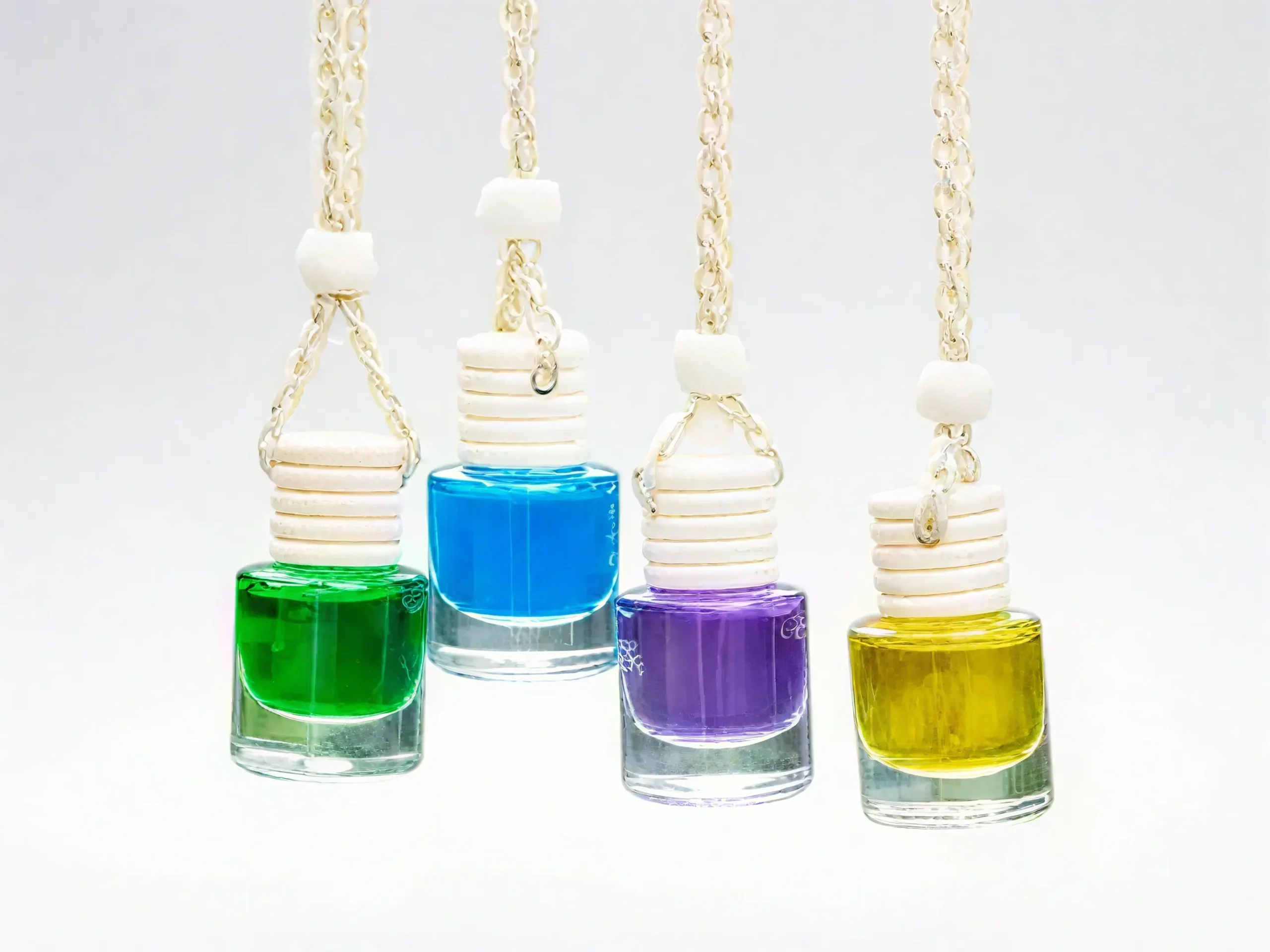
6. Competitive landscape analysis and best practice
Mass-market is spread to an ultra-wooden in the dynamic car perfume market, which has the advantage of the design for the brand identification and loyalty. Analysis of leading players provides insight into successful strategies and market intervals.
6.1. Market observation and major trends
The global car Air Freshener Market is steadily growing, motivated by the ownership of the growing vehicle and the demand for in-car comfort. The trend of includes natural materials, long -lasting aroma, and smart delivery systems. The vent clip freshers dominate (USD 1.75 billion in 2024) due to ease of use.
6.2. Leading brand and their design strategies
- Diptyque:
- Design language: Black metal finish and elegant, minimal design with iconic oval logo.
- Material options: Metal housing for durability and premium feel, which includes aromatic inserts.
- Functional mechanism: Uses a cold circulation system with adjustable metal grills for the intensity of the smell, clamping for the vent. This allows immediate odor change of without dull trails.
- Brand Identification: A premium, deployed as a luxury brand, which is “known through the art of art”.
- Customer loyalty: high-quality, iconic Scents (eg, bies, figuier) and refined UX receive loyalty, despite high prices (Defwis refuses $ 71- $ 125, $ 50).
- Creation:
- Design language: Elegant wood holder design.
- Material option: wood holder, active by fragrance airflow.
- Functional mechanism: Car clip on fan unit/vent.
- Brand Identification: Inspired by Asian cultures, fantastic yet offered affordable products.
- Customer loyalty: attains loyalty through attractive scents (eg, Sakura, Sweet Orange/Sedarwood) and re -fills availability.
- Flow:
- Design language: minimal design in wood, stone and metal. Wood freshers use continuous sour USA wood.
- Ingredients option: Continuous Sour Elder Wood, Organic Stone, Durable Metal Exterior.
- Functional mechanism: Attachs through magnetic clips or to the balcony via the car vents. Metal fresheners have a sliding tab for adjustable fragrance intensity.
- Brand Identification: Car focuses on minimal design, sometimes changing scents, and natural, chemical-free materials with the aim of rethinking on freshers.
- Customer loyalty: run by a monthly membership service for convenience and diversity. Last ~ 30 days.
- Kalti Milano:
- Known as an Italian brand, known for the innovative design and excellent aroma in the luxury segment, which suggests focusing on sophisticated aesthetics and high quality fragrance profiles.
6.3. Best practice and market intervals
- United Visual Identification: Successful brands maintain frequent designs in all elements (logo, color, typography, packaging, product form).
- Stability as a main value: Growing consumer demand for environmentally friendly products makes durable materials and refillable design compared to a market, not a niche.
- User experience (UX) focus: Ease of installation, adjustment and refilling is important for positive UX and Loyalty.
- Storytelling and emotional connections: Brands that describe compelling stories through design and messaging form deep emotional relations. Making fragrance to provoke landscape or driving routes is an emerging tendency.
- Adaptation and privatization: BESPOKE fragrances or adaptable defuses increase ownership and emotional relationship.
- Lewersing Technology: Smart features such as auto start/stop, adjustable intensity and app-based control (eg, Aroma360) complete the take-service segment and increase the convenience.
- Avoiding design failures: inconsistent design, ignoring audience needs, overcomplicating design, or rigorous rebranding brand without research can damage the image and loyalty. Tropicana’s 2009 Packaging Redigine Felis is a caution story.
- Market intervals for MOSTEB:
- Integrated smart features with premium aesthetics: The opportunity to combine advanced AI/IOT features with ultra-linger materials and design for a spontaneous, intelligent in-infrastructure experience.
- Modular and customized luxury: Beyond scent refill, offering modular design components (eg, interchangeable exterior shells) can meet the demand for personalization.
- Story of transparent stability: Apparently resonance with environment-conscious premium buyers.
Learning from the successes and failures of the contestants, the Mosteb can strategically position their defuser designs to occupy the market and build loyalty.
7. Strategic design and branding recommendations
Based on this analysis, Mostb should adapt your car perfume decayer bottle design to strengthen the brand identity and increase customer loyalty within the premium and environment.
7.1. Align design with core brand characteristics
- Luxury and sophistication:
- Ingredients: Brush aerospace-grade aluminum, polished stainless steel, real vegetable-tan leather accents, or high densing ceramic-like premium, use touch materials. Consider the option of innovative, partially bio -technically produced leather.
- Form factor: Sculpture with clean lines and sophisticated ratio, adopt minimum forms. Avoid highly complex or angular designs until “sporty luxury” is targeted. The design should be deemed to be specific, reflecting timeless elegance.
- Color palette: Focus on neutral, sophisticated colors such as dark charcoal, matte black, polish silver, champagne gold, or rich earth tones. These high end cars provoke calm, luxury and uninterrupted integration with interiors.
- Functional mechanism: Apply a cold spread system with accurate, adjustable intensity control (eg deputyQ) for a subtle, effective aroma. The attachment should be prudent and strong, such as a magnetic vent clip or smooth, integrated dashboard mount.
- Stability and environmental consciousness:
- Ingredients: prioritize sustainable and recycled materials continuously for defuser body and packaging, including recycling aluminum, bio-plastic (eg, mirams), or certified sustainable wood (eg, drifted alder wood).
- Refilable System: Design a highly intuitive, easy-to-use-use-use cartridge system. It reduces waste, encourages repeat shopping, and supports the membership model. The refill cartridge should be recycled or fertilized.
- Packaging: Use minimum, minimal, environmentally friendly packaging with minimal ink/plastic, to strengthen stability from the first conversation.
- Innovation and technology:
- Smart features: Integrate the intensity of the fragrance based on environmental factors (temperature, humidity, air quality) or even the driver mood (speculative, through biometric integration) to adjust the intensity of the fragrance.
- Connectivity: Offer smartphone app control for smell selection, scheduling and intensity. In-car will increase the voice control integration UX with assistants (eg, Alexa, Google assistant).
- Modular design: Explore the modular components for defuser external shell customization (eg, content finish, color) or easy technological upgradation.
7.2. Increase customer loyalty through design-operated experiences
- Seamless User Experience:
- Ergonomics: Ensure that the defuser is easy to install, operate and replenish without interfering with or intervene with control. To separate the attachment, it must be simple yet.
- Controlled control: Manual control, if present, should touch, be clearly labeled, and provide satisfactory response.
- Premium alleged value:
- Craftsmanship: Note the expansion in manufacturing, ensuring innocent finish and accurate assembly, strengthening high quality and justifying premium pricing.
- Unboxing experience: designed packaging as an extension of luxury experience, creating a memorable first impression aligning with the Mosteb brand.
- Membership Model Integration:
- Refill facility: refill system design should be exceptionally adapted to the user, allowing the cartridge replacement to be comfortable and satisfactory.
- Aesthetic stability: Ensure that refill cartridge maintains high aesthetic standards similar to the main defuse, strengthen the premium brand image for consumables.
- Tiered Prasad (Satta): Consider the membership of the tier with exclusive Scents or content for high level members, increasing loyalty and perceived value.
7.3. Active market status
- Storytelling: Develop a compelling brand story that exposes Mosteb’s commitment to designing excellence, permanent practices and innovative technology, which is woven into product design, marketing and communication.
- Cooperation (speculative): Explore partnership with luxury automotive brands or famous designers for limited-sanskars defuses, increasing reputation and reaching new audiences (eg, drift’s klay thompson cooperation).
- Digital appearance: Maintain a strong, consistent digital brand identity, display the design and functionality of the Mosteb through high quality visual and attractive materials.
By implementing these recommendations, the Mosteb can take advantage of the defuser design as a strategic property to define its unique brand identity and evaluate a loyal customer base to the base of aesthetic excellence and functional innovation.
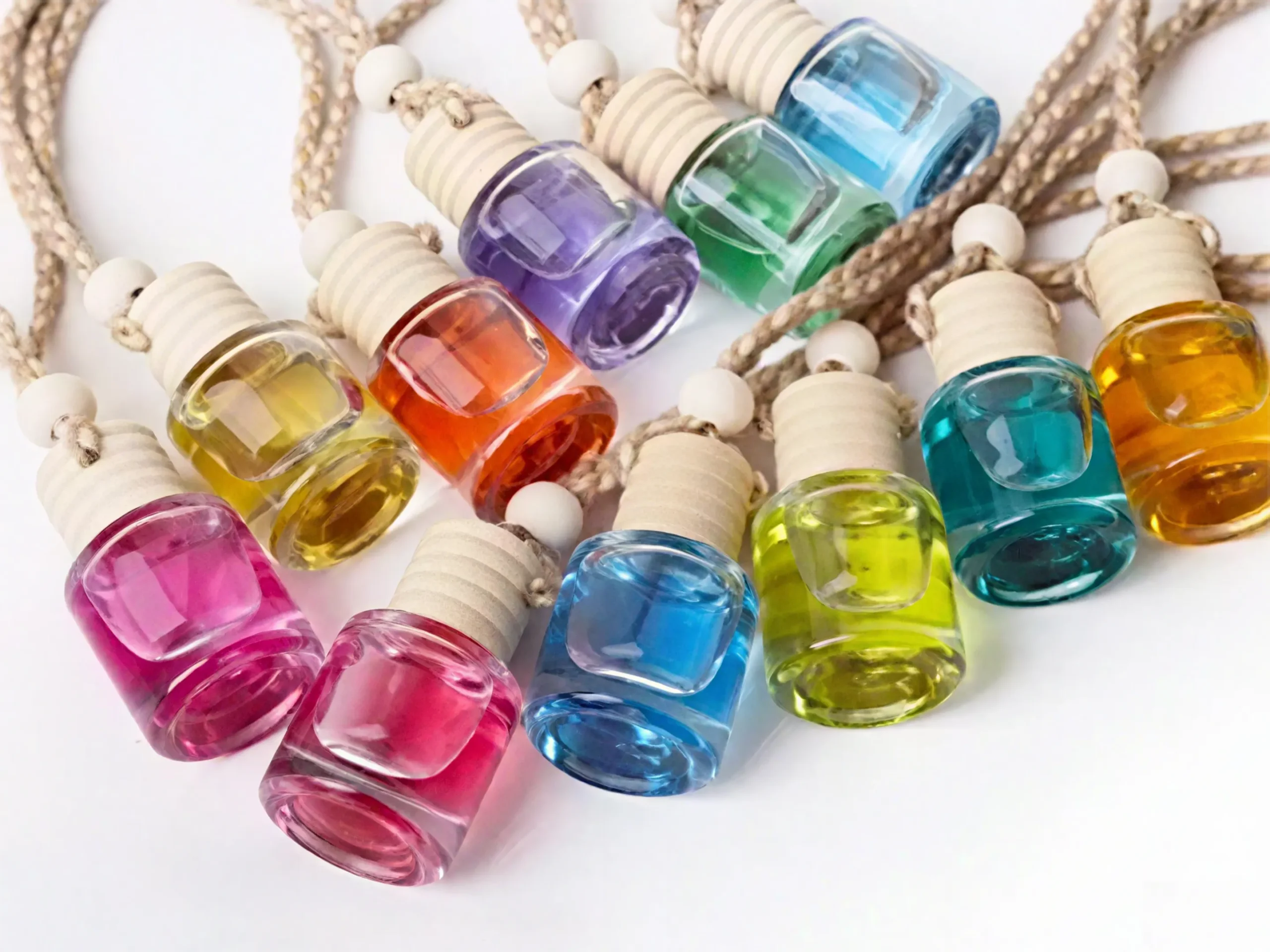
8. Future trends and emerging design paradigms
Future car performance will be greatly developed, operated by design, content science, connectivity and human-computer interaction advancements. Mosteb should estimate these trends for competitive advantage and innovation.
8.1. Advanced Materials
- Bio-plastic and sustainable composite: Automotive industry is fast adopting environmentally friendly materials (eg, Mercedes-Benz Net-Carbon neutral, by 2030, BMW 80% emissions reduction by 2030). It adopts advanced bio-plattics, rescled composites (ocean waste, by agriculture, these materials feel with stability.
- Smart Ingredients: Future Defwisers can include smart content responding to environmental stimuli. Thermocromic material may indicate odor intensity or levels; Self-healing polymer cover can increase durability.
- Lightweight alloys and advanced ceramics: Align with automotive lightweight trends, can use advanced lightweight alloys or high -power ceramics for defuser beauty and functional benefits.
8.2. Technology Integration and IOT
- AI-operated individualization: AI-operated smell proliferation is an emerging trend for individual, intelligent aroma experiences.
- IOT Connectivity and Ecosystem Integration: Defuser will integrate in wider vehicle IOT ecosystem, which means with seamless integration:
- Vehicle Infotainment System: Permission to control through touchscreen or voice commands (eg, Alexa, Google Assistant).
- Smartphone Apps: Scent Use/Refils Monitoring for Advanced Adaptation, Scheduling and Monitoring.
- Smart Home Systems: Possibly allows users to pre-set the fragrance of the car from home for constant sensory experience.
- Customable fragrance profile: Beyond the east-filled cartridges, the future defuser can allow on-demand combination at a combination of many fragrances for personal aroma (eg who like Bispok cartridge of Malon), managed through an app for “aroma layering kit” experience.
- Holographic Interface (speculative): As Holograffic dashboard replaces traditional display, future defuses can be integrated, can display smell or control the holeographic.
8.3. Consumer preferences and aesthetics
- Minimum aesthetics with increased functionality: minimum car will continue interiors, clean lines, uncontrolled spaces, and emphasize seamless technical integration. The mestabe defuse should be embodied by this, which offers internal aesthetics that complements the interior.
- Moduicality and personalization: Consumers rapidly demand personal aesthetics. Faisur defuser can facilitate modular design, allowing users to swap external casting (content, color) or to integrate 3D-affected custom components.
- Biofilic design: As the car incorporates internal natural elements and biofilic designs (eg, durable wood, plant-based materials), the Mosteb can detect natural forms/texture defuses, increasing the relationship of nature within the vehicle.
- Health and Kalyan Focus: Increasing demand for plant-based materials, durable packaging, and aromatherapy will increase the demand for defuses using natural, organic, hypoallergenic essential oils.
8.4. Active innovation for Mosteb
To capitalize on these trends, Mosteb:
Install a dedicated R&D unit focused on advanced material and smart fragrance distribution system.
Strategic partnership with automotive OEMs and technology providers to integrate the defuser directly into vehicle platforms.
Monitor consumer preferences continuously through advanced analytics and qualitative research.
Explore patent innovative attachment mechanisms and odor delivery technologies to secure a competitive advantage.
By embracing these future trends and design paradigms, the Mosteb can put himself in a position as a leader in the intelligent and durable luxury car perfumes market, offering products that are aesthetically pleasing, technically advanced, and the future driving is integrated into the necklace.



